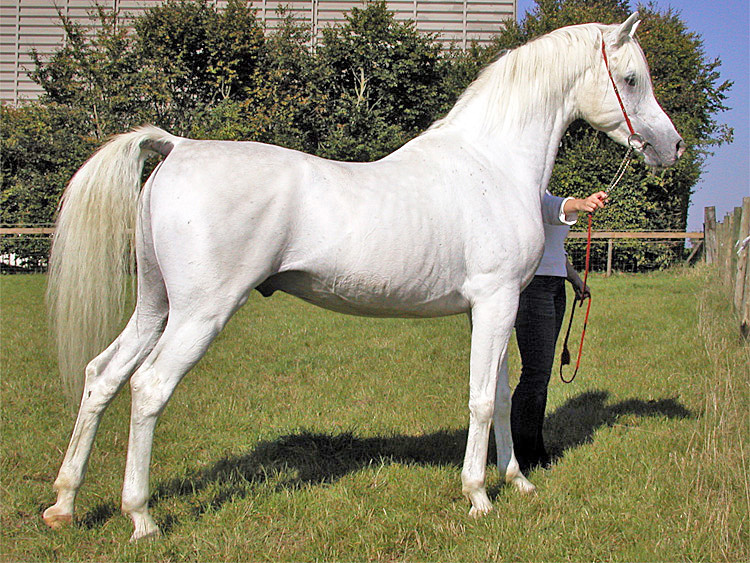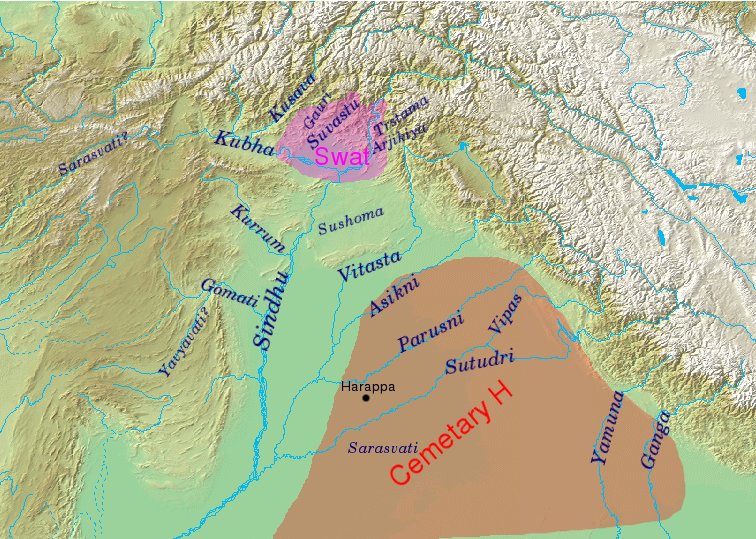The Rigveda speaks of the horse, to some extent glorifying it. So the Rigvedic people knew of the horse and the chariot. In India however the horse was not present until the (proto-)Rigvedic people came to India, and brought the horse and chariot with them. This happened after the Indus Valley Civilization because no horse remains have been found there or in India before the Rigvedic people brought the horse to India. Similarly no chariot remains have been found in India from a pre-Rigvedic age.
This means Rigvedic people knew of horse domestication, horse riding, chariot technology. Indus Valley Civilization people knew of no such thing.
Conclusion: Indus Valley Civilization precedes Rigvedic Age.
Why is the horse evidence irrelevant? (from the OIT PoV)
Assumptions are being made in the above AIT logic.
- The people who composed Rigveda, domesticated the horse
Nowhere in Rigveda, there is any mention of the Rigvedic people domesticating the horse- no wild steppes, grasslands, etc.
- no herds of wild horses roaming these grasslands.
- no proto-Rigvedic Aryans cohabiting with the horse in such an environment
- no capturing of the horses in the wild
- no breaking of horses
- no importance of the horse in pastoral life
- no drinking of mare's milk
- not necessary, but horse meat was not eaten
- One would find evidence of the horse in Indus Valley Civilization if horse had already been introduced
- why would the bones of a horse be available in the middle of a city? If horses were to die, would they be left around. If horses were to be eaten, even then one would dispose of the bones, not in one's backyard.
- most likely, horses would be in the royal stables, under a proper management, and when they died their remains would be carefully and dutifully disposed of either through cremation or through dumping them some distance away, perhaps in a pit, so that no diseases spread due to carcasses
- considering that horses were traded with the Steppes, and there were only few in India, the possibility of finding the remains of those few horses would be even less.
- The people who composed Rigveda, had a memory of abundance of horses
- hardly any common soldiers or even internal security people has access to horses either mounted, or chariot-riding
- it was solely the preserve of the regal elite and the army generals
- the prestigious position of the horse, itself points to its scarcity
- The horse was not domesticated such a long time ago as Rig Veda is dated by the proponents of Autochthonous Vedic Aryan Theory
- The current understanding in archaeology is that horse was domesticated around 4000 BCE. The Botai findings put it at 3500 BCE.
- This however only shows the earliest known date of domestication of horse. It has in the past been pushed back, so it can be again as more research is done. So it is possible that domestication happened earlier as well.
- Many who propose OIT, can live with the 4000 BCE date as well.
- The horse cannot have been in India through trade in horses, only through introduction by proto-Rigvedic people
- Actually Rigveda itself speaks of the Maruts who used to come from the North, crossing mountain passes, bringing their herd of horses to Indra's country.
- Maruts need not be seen as belonging to the Vedic Aryans, but as an external agent, a different tribe, or a tribe identified by the Maruts as deities
- Maruts are said to be allied with Indra, i.e. the regal power of the PUrus, from the PoV of the composers of Rigveda
- Maruts come into the picture mostly after SudAs defeats the Anu Confederacy in the Battle of the Ten Kings, and moves into the Sapta-Sindhu area, thus making trade with the Maruts a possibility, who come through Afghanistan south, bringing their horses along, possibly from Central Asia, as the talk is mostly of mountains and rivers being in their way - Rasā, Krumu, Anitabha, Kubha, or Sindhu being in their path (RV 5.53.9).


